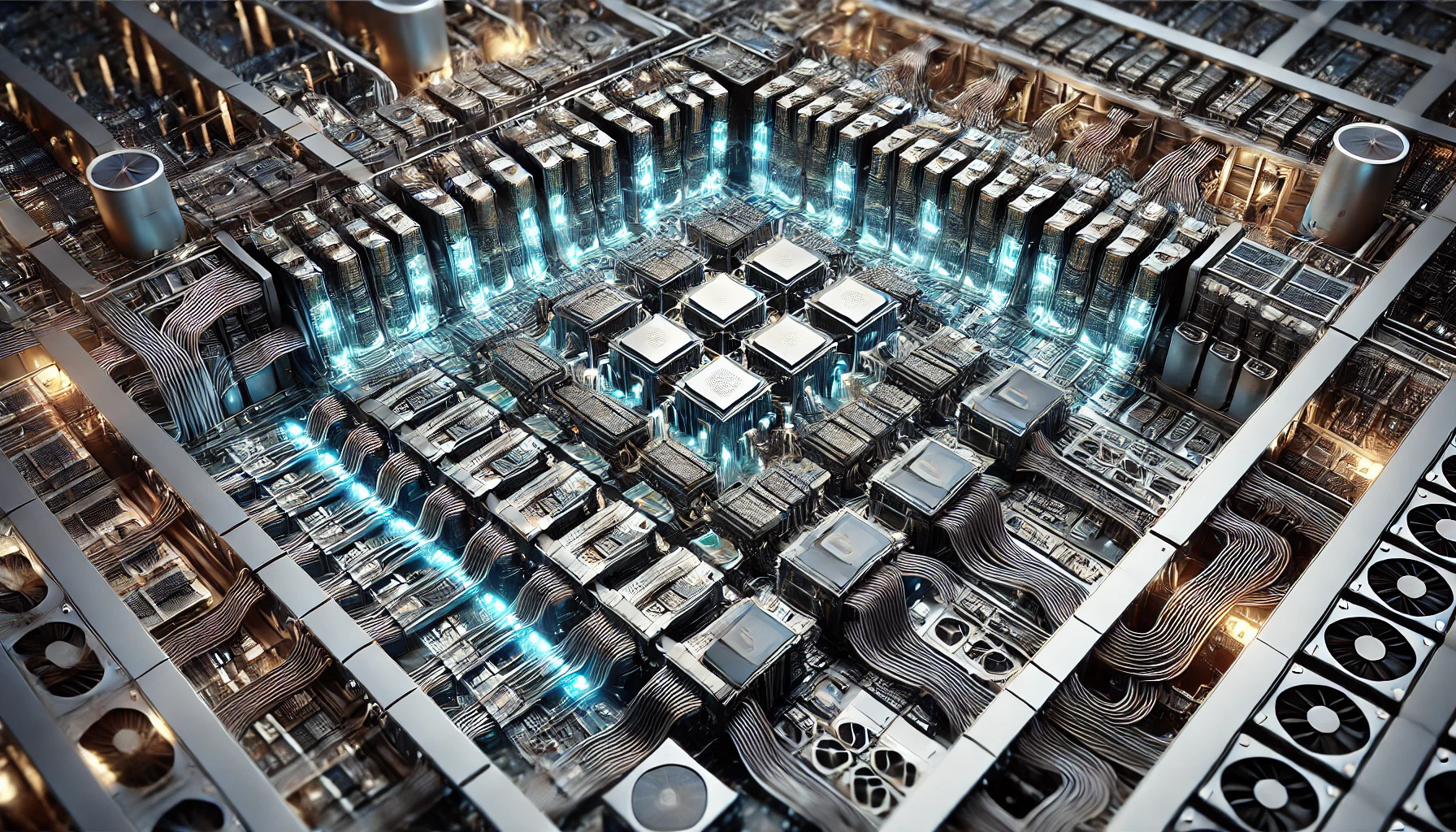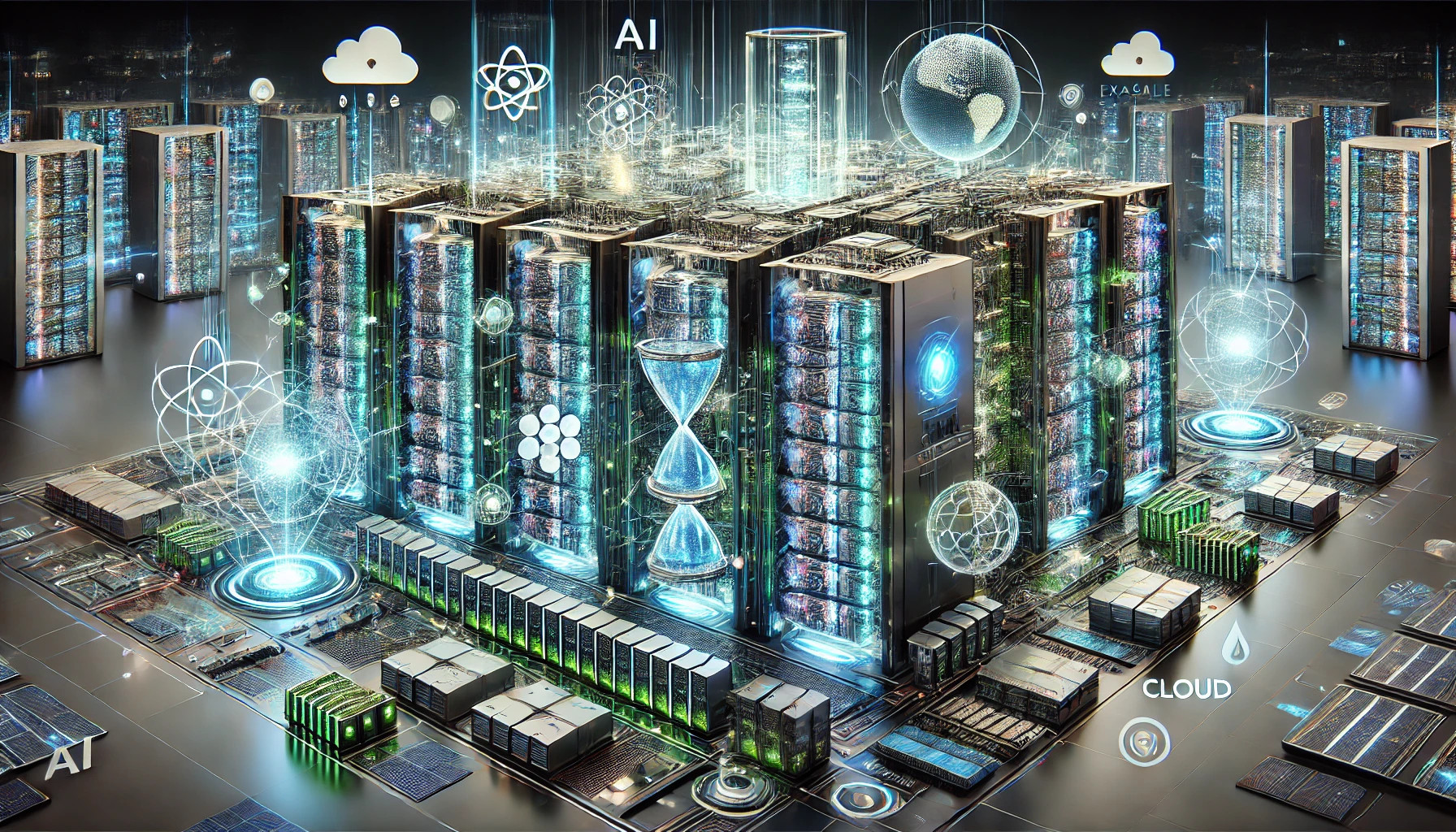Supercomputers are a technological breakthrough that has changed many areas of science and technology. These computing systems have enormous power, thanks to which they can process data and perform calculations at speeds that are inaccessible to conventional computers. Their performance is millions of times higher. From predicting climate change to creating artificial intelligence, they solve problems that require giant resources and parallel data processing. In this article, we will consider what a supercomputer is, how it is structured, where such systems are used, and what path of development awaits them in the future.
Defining a Supercomputer
A supercomputer is a high-performance computing system designed to solve complex problems that require huge computing resources. The definition of a supercomputer covers systems that significantly exceed the capabilities of conventional computers in speed and performance, especially in parallel data processing and high-precision computing. They are most in demand in the development of artificial intelligence algorithms, training machine learning models, and processing large amounts of data.
The main feature of supercomputers is their ability to combine the resources of thousands or even millions of processors into a single system. This allows tasks to be broken down into parts and executed simultaneously using parallel data processing, which significantly speeds up calculations. As a result, the supercomputer functions as a single system, although its power is distributed among many components.
The performance of such systems is measured in FLOPS (floating point operations per second). This is how their computing capabilities are determined. Modern supercomputers can perform more than 100 petaflops (PFLOPS), which is equivalent to hundreds of quadrillions of operations per second.
History and Evolution of Supercomputers

The first supercomputers (IBM 7030 Stretch from IBM and UNIVAC LARC from Sperry-Rand) were developed in the 1960s. They were used for military purposes and scientific research. Over time, such technology was distributed in the industrial and commercial sectors, which gave a powerful impetus to its development and improvement.
The first commercially successful supercomputer is considered to be the Seymour Cray CDC 6600. It was developed by the American engineer Seymour Cray in 1964 and at one time held the title of the fastest computer in the world. Today, high-performance computing is especially in demand in the field of developing artificial intelligence (AI) and machine learning (ML) systems, so many modern supercomputers are designed specifically for these purposes. Among such supercomputer examples are the AI Research SuperCluster (RSC) from Meta Corporation, the cloud supercomputer developed for OpenAI by Microsoft, and Nvidia Perlmutter, which is among the top 5 newest supercomputers.
Currently, the fastest supercomputer in the world is Frontier. It was developed by HPE Cray and installed at the Oak Ridge National Laboratory in the United States. It was the first in the world to achieve a performance of more than 1 exaflop (1 quintillion operations per second). Its maximum performance exceeds 1.1 exaflops, making it not only the fastest but also the most powerful supercomputer.
Previously, the fastest supercomputer title belonged to Japan's Fugaku, developed by RIKEN and Fujitsu. Before Frontier, complex scientific calculations were performed by Summit, also located at Oak Ridge National Laboratory. These systems continue to push the boundaries of computing technology, helping to develop cutting-edge solutions in areas ranging from artificial intelligence to modeling complex physics.


Key Components and Architecture of Supercomputers
The core of a supercomputer is a complex of many central processing units (CPUs) that are combined into computing nodes with memory and provide incredible power through parallel data processing. Modern supercomputer architecture is represented by thousands of nodes that jointly solve problems using either symmetric multiprocessing or massively parallel processing. Some systems have a distributed architecture, where the nodes are located in different geographical locations but work as a single unit.
Key features of supercomputers:
- High performance and speed. These machines provide enormous computing power by combining many (thousands to hundreds of thousands) processors working synchronously. This allows them to process huge amounts of data at incredible speeds, which is especially important for modeling, simulation, and scientific research.
- Massive parallel processing. Tasks are broken down into small chunks and executed simultaneously on different processors. This allows for high efficiency. This method maximizes performance in complex calculations: weather forecasting, data analysis, modeling, and simulation.
- Interconnected nodes. The architecture of supercomputers is represented by many computing nodes that are connected by high-speed networks and special interconnections for data exchange. Each node has processors, RAM, and storage systems that work as a single system.
- Cooling. Supercomputers generate a huge amount of heat, so efficient cooling systems are needed to keep them running smoothly. Liquid cooling, airflow management, and heat pipes are commonly used to maintain the desired temperature and prevent overheating.
- Specialized hardware. To ensure smooth operation, supercomputers are equipped with specialized processors and high-bandwidth connections. This allows for improved performance and high reliability.
- Large-scale data processing. One of the main tasks of supercomputers is processing large volumes of data. They are capable of working with petabytes of structured and unstructured data, which is especially important for scientific and business research.
- Specialized software (SW). In addition to powerful hardware, supercomputers require specially developed software and operating systems that allow the load to be evenly distributed between processors and support parallel computing.
The architecture of a supercomputer makes it indispensable for solving problems that require huge computing resources and high accuracy. Its features help in the development of new technologies and innovations. They allow scientists and engineers to perform complex studies and experiments that cannot be implemented using traditional computing systems.
Supercomputer vs. Regular Computer
Supercomputers and regular computers differ significantly in their capabilities and purposes. The differences are most noticeable in performance, scale, use, and physical size.
The main differences between supercomputers and PCs:
- Computing power. Supercomputers can achieve hundreds of petaflops (PFLOPS) of performance, while regular PCs have modest figures – from hundreds of gigaflops to tens of teraflops.
- Number of processors. Supercomputers are clusters of many processors grouped into computing nodes. Each node can contain thousands of processors, while regular computers are equipped with one or a few processors, which limits their computing capabilities.
- Narrow focus. Supercomputers are designed for specific tasks and used in specialized areas (scientific research, engineering). Traditional personal computers are designed for a wider range of everyday tasks.
- Physical size and infrastructure. Supercomputers take up a huge amount of space, require complex cooling systems, and special rooms for placement. Regular computers are compact and can be easily placed in a home environment. Modern cloud technologies allow the use of computing power similar to supercomputers without complex infrastructure. This makes powerful computing accessible to a wide range of users.
Real-World Applications of Supercomputers
The advanced modeling and forecasting capabilities of supercomputers bring enormous benefits to humanity. Their capabilities are actively used in various fields of science, technology, and business. This allows for research and development that is not possible with conventional computers. Thanks to them, businesses now benefit from technical innovations and optimize performance to develop higher quality and more functional products.
Supercomputers are regularly used in dozens of areas. The most significant of these are:
- Climate and weather research. Supercomputers analyze data from satellites, radars, and other sources. This helps model climate change, forecast weather conditions (impending cyclones and anticyclones), predict natural disasters (hurricanes and floods), and respond to threats in a timely manner.
- Nuclear energy. The most powerful computing systems are used to simulate nuclear fusion. The Frontier and Summit supercomputers allow scientists to develop next-generation technologies for fusion reactors and improve the use of nuclear energy.
- Healthcare. In the medical field, supercomputers are used to analyze genetic information, model biological processes, and develop new medicine. This accelerates the development of treatments for complex diseases, including finding new therapies to combat epidemics and chronic diseases.
- Aircraft manufacturing. Supercomputers can simulate complex processes such as turbulence and aeroelasticity. This helps engineers optimize aircraft designs and create more efficient aircraft engines. For example, the Frontier supercomputer is involved in testing innovative aircraft engines that can reduce carbon dioxide emissions by 20%.
- Cryptanalysis and security. Supercomputers are used to analyze ciphers and cryptosystems. In this area, they are most often used to develop methods for protecting data and solving complex cryptographic problems. In addition, they play an important role in ensuring national security.
- Mining. In the oil and gas industry, supercomputers are used to analyze geophysical data. They help find new oil and gas fields. Processing huge amounts of data helps specialists more accurately identify possible mineral deposits.
The Future of Supercomputing

Supercomputers continue to rapidly develop thanks to advances in artificial intelligence and machine learning. In turn, these technologies require increasingly powerful and specialized computing systems.
Key trends in supercomputer development:
- The Exascale Era. The next stage in the development of supercomputers is the creation of exascale systems capable of performing a quintillion operations per second. They will open up new opportunities for medicine, biology, and fundamental science, where high precision and speed of calculations are required.
- Quantum computing. Integrating quantum technologies with supercomputers will allow the creation of hybrid systems capable of solving problems that are inaccessible to classical computers. This will help in the development of new medicine, materials, and the improvement of cryptographic systems.
- Energy efficiency. Reducing the energy consumption of supercomputers is an important goal. New systems are being designed with energy efficiency, renewable energy, and improved cooling technologies in mind to reduce their carbon footprint.
- Cloud computing. Cloud computing provides access to powerful computing resources without the need for specialized hardware. In the future, supercomputers will be tightly integrated with cloud platforms. This will ensure scalability and availability of computing to a wider audience.
- Artificial intelligence and modeling. Artificial intelligence and machine learning are the main drivers of supercomputer development. Supercomputers will help create more powerful models for simulation, forecasting, and data analysis. They, in turn, will stimulate the development of new technologies in medicine, climatology, engineering, and many other areas.
According to a study by Hyperion Research, the global supercomputer market will grow to $46 billion by the end of 2024. More and more well-known IT market players are releasing their supercomputers. Among them are Amazon Web Services, Microsoft, and Nvidia. Key manufacturers are now focused on developing exascale development capabilities. Researchers predict that these supercomputers will be able to accurately model the human brain with all its neurons and synapses.
Conclusion
Supercomputers are powerful tools that are actively used today to develop innovative technologies in various fields. They perform resource-intensive calculations in science, engineering, and manufacturing, contributing to scientific discoveries and technological progress. Large IT corporations are constantly improving their supercomputers, increasing their capabilities in data processing, modeling, and forecasting. The spread of cloud technologies makes them more accessible, allowing their potential to be used not only by large companies but also by small teams and even individual users.
Are you using Facebook Lead Ads? Then you will surely appreciate our service. The SaveMyLeads online connector is a simple and affordable tool that anyone can use to set up integrations for Facebook. Please note that you do not need to code or learn special technologies. Just register on our website and create the necessary integration through the web interface. Connect your advertising account with various services and applications. Integrations are configured in just 5-10 minutes, and in the long run they will save you an impressive amount of time.
